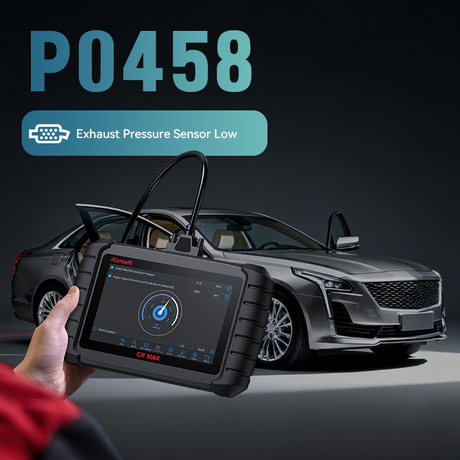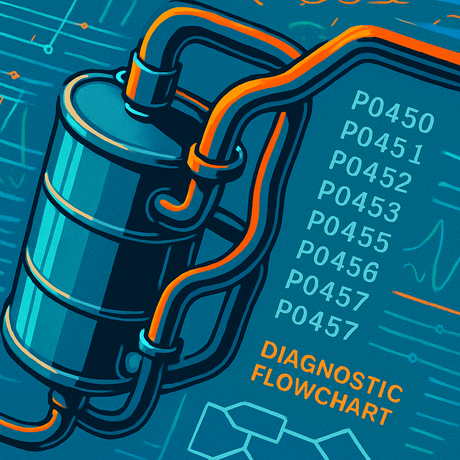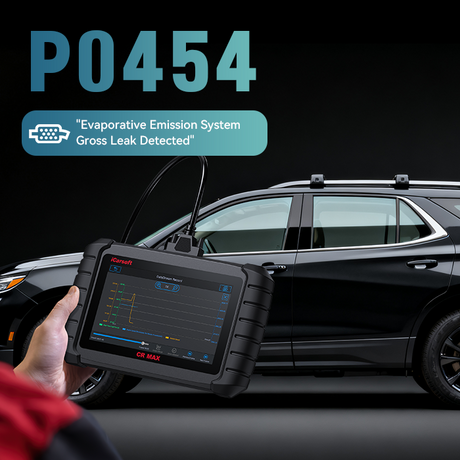Last updated: October 2025
🔍 What Does Code P0473 Mean?
The code P0473 signals that the engine (or powertrain) control module has detected a voltage reading from the exhaust pressure sensor (Pressure Sensor “A”) that is too high — typically above the expected operating range. According to diagnostic sources, this tends to be an electrical problem rather than purely mechanical.
The exhaust pressure sensor monitors back-pressure in the exhaust system (often near the turbocharger or exhaust manifold). When this sensor reports an unusually high signal, the system cannot correctly manage EGR, DPF regeneration, or turbo operation — which may trigger limp mode or reduced performance.
⚠️ Common Symptoms
- Check Engine Light (CEL) is ON
- Reduced turbo boost or poor acceleration
- Frequent or failed DPF regeneration cycles
- Increased exhaust smoke (especially in diesel engines)
- Possible codes such as P0472 (Circuit Low) or P0471 (Range/Performance) appearing together
⚙️ Typical Causes
- Faulty exhaust pressure sensor (internally shorted to voltage)
- Short circuit to voltage in the sensor signal wire
- Damaged or burned wiring harness or connector corrosion
- Clogged or melted pressure tube leading to unrealistic sensor reading
- Faulty ECM/PCM (less common, only after all wiring and sensor checked)
🧭 How to Diagnose & Fix P0473
Use a professional scan tool (e.g., the tool you promote) to help diagnose. Steps:
- Connect the scanner, read stored codes and confirm P0473.
- Check for any related codes such as P0472 (low input) — link: P0472 Guide.
- Visual inspection: locate the exhaust pressure sensor, inspect wiring, connectors, and hose/tube to sensor for soot, melt or blockage.
- Use live data to check sensor voltage — if it's consistently high (e.g., near 5 V) despite normal conditions, suspect short or sensor fault.
- Test wiring: verify 5V reference, ground continuity, signal wire not shorted to voltage. If wiring checks out, replace sensor.
- Clear codes and perform a drive cycle; monitor to confirm code does not return and system regulates properly.
✅ Repair Solutions
- Replace the exhaust pressure sensor with a quality OEM or equivalent part.
- Repair or replace damaged wiring or connectors in the sensor circuit.
- Clean or replace clogged pressure tube/line between exhaust manifold and sensor.
- If ECM faults or calibrations are flagged, consider software update or repair.
📖 Real-World Case Example
In workshop practice, many European diesel vehicles (Audi, BMW, VW, Mercedes) with P0473 were found to have wiring shorted to voltage or clogged sensor tubes. For example: “The P0473 code is common on vehicles with variable-nozzle turbos and soot buildup in the sensor
❓ FAQs
Q: Can I drive with a P0473 code?
A: You can drive short distances, but long-term driving with this code may lead to DPF regeneration failures or turbocharger issues. Address it promptly.
Q: How much does it cost to fix?
A: Typical sensor replacement plus wiring repair may cost between $150–$500 USD, depending on vehicle and labor.
Q: What voltage should the exhaust pressure sensor read?
A: Usually between ~0.5 V to ~4.5 V. A voltage above ~4.8–5.0 V may cause this high input code.
Q: Is this the same as P0472?
A: Not exactly. While P0472 indicates low input (voltage too low), P0473 is high input (voltage too high). Diagnosing both uses similar wiring/sensor checks but opposite signal fault conditions. See also our P0472 Guide.
Q: Could a clogged DPF cause this code?
A: Indirectly yes. A severely restricted exhaust may alter back-pressure readings, but P0473 is more typically an electrical/sensor issue. Still, it’s wise to inspect the DPF and pressure tube.
Q: Is this code common in gas engines or only diesels?
A: It is more prevalent in turbocharged and diesel engines with back-pressure sensors, but can also appear in gas turbo applications.













